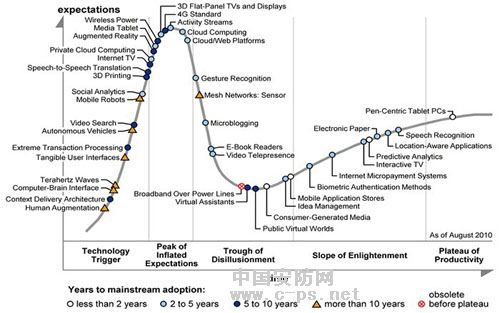 Editor's note: In the face of today's China's enthusiasm for the Internet of Things industry, perhaps the weak “snarl†voice of Anita Campbell can cause us to pause a little and think about where we will go next. We must not only maintain our enthusiasm and confidence in the R&D, promotion, and discussion of emerging technologies, but also turn a blind eye to the technologies, industries, models, and emerging areas that are within easy reach. Otherwise, when unforeseeable bad news comes, we will have no alternative but to wait for death. At the same time, the author puts forward a paradox: On the one hand, he does not advocate that SMEs waste time on the Internet of Things technology. On the Other hand, the extraordinary ability to innovate is often attributed to the "garage" of "small and medium enterprises." Perhaps this is a good reminder for SMEs engaged in the Internet of Things. However, when we have placed a bet that exceeds our ability to pay on a premise that we do not have a full grasp of a thing, we must find a way for ourselves to retreat. The Internet of Things is like this, everything is like this.
Editor's note: In the face of today's China's enthusiasm for the Internet of Things industry, perhaps the weak “snarl†voice of Anita Campbell can cause us to pause a little and think about where we will go next. We must not only maintain our enthusiasm and confidence in the R&D, promotion, and discussion of emerging technologies, but also turn a blind eye to the technologies, industries, models, and emerging areas that are within easy reach. Otherwise, when unforeseeable bad news comes, we will have no alternative but to wait for death. At the same time, the author puts forward a paradox: On the one hand, he does not advocate that SMEs waste time on the Internet of Things technology. On the Other hand, the extraordinary ability to innovate is often attributed to the "garage" of "small and medium enterprises." Perhaps this is a good reminder for SMEs engaged in the Internet of Things. However, when we have placed a bet that exceeds our ability to pay on a premise that we do not have a full grasp of a thing, we must find a way for ourselves to retreat. The Internet of Things is like this, everything is like this. Many new technologies take longer to enter the mainstream than you think. Just look at the famous Gartner hype cycle chart to understand what I mean. Here is a chart of Gartner's 2010 hype cycle:
Gartner is a technology research company that produces a chart of hype cycle analysis every year.
The "hype cycle" shows that when an exciting new technology emerges, people will talk about it. Early adopters will catch on, leading to predictions about market growth becoming arbitrary, and this prediction is often optimistic. This technology will reach the peak of a high expectation.
Then the reality began to pop up. Perhaps this technology is not mature, or the infrastructure needed for this technology is not yet in place. There are many reasons, but the result is the same. The initial excitement cooled down, the technology entered the trough, and people's attitudes began to become negative, because this technology does not meet the previous optimistic predictions. Some technologies are no longer popular or come out of sight. Some technologies are eliminated and replaced by better ones.
But in many cases it takes time to understand. Technology moves out of the trough and finally returns to the level of balance with its production capacity. The market can test where this technology is suitable for use and how to match it. As the table shows, an emerging technology sometimes requires a hype cycle of ten years or more before it can truly find its place in the market.
The "Internet of Things" I understand is currently in the early stages of the "hype cycle," and we are now in the early stages of being "high expectations." However, it is still so early that we can't even convince ourselves that we are talking about whether the fit of the Internet of Things is talking about the same thing -- each object is linked in an intelligent form and can send its own data. Of course, many things must happen before the true potential of a technology is stimulated. For example, I wrote a few months ago "Do not be silent on the Internet of Things."
The Internet of Things is exciting in many ways. But as the owner of SMEs, we have to face the reality. Most of us think that the Internet of Things will not seriously affect our business in the next few years. I don't know what you guys think, but in my business, we still need to overcome how to get information by downloading software one after another, not having to argue for a few hours through a paid online tech college, why in our work Can not have such import or export function.
When we are involved in the level of automation, it is seldom imagined that the refrigerator will one day be smart enough to tell us that we need to stuff it. As economists Schumpeter and columnists point out, there may be a simple solution. It might be easier to open the fridge yourself.
Wikipedia entry on "Internet of Things" shows: "The idea is simple, but the application is difficult." Everyone is surrounded by 1000 to 5000 objects. Almost all objects need to be coded and linked. This will involve 50 to 100 trillion objects.
I love technology, including everything it can do for my business. However, I would rather focus on those technologies that we can benefit from, and do not want to pay attention to technologies that take 10 years or even do not know how many years to enter the market.
Seamless Steel Pipe Co., Ltd. , http://www.cz-steelpipes.com